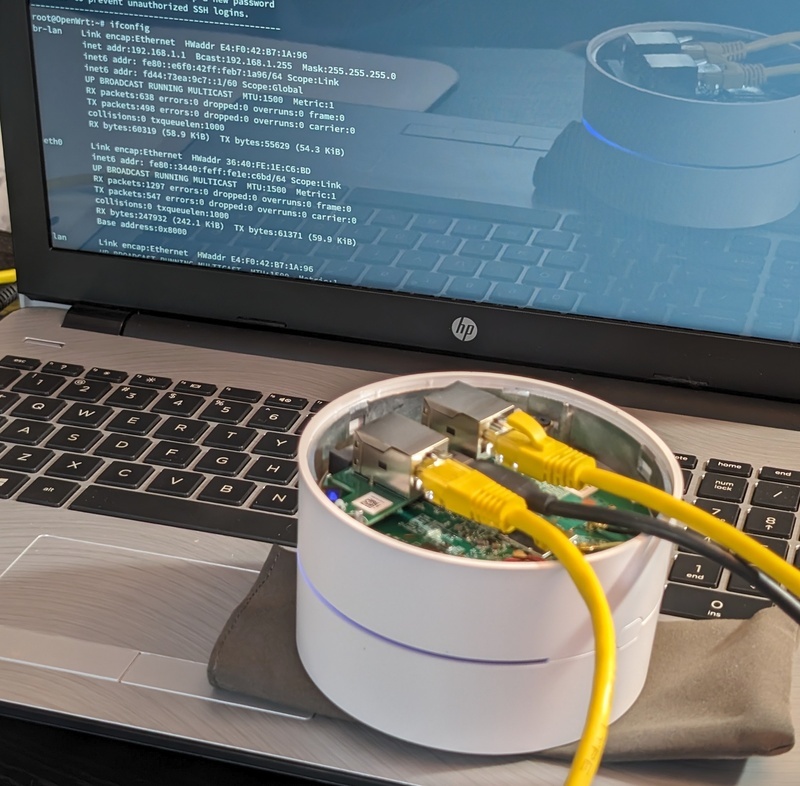Someone on another Lemmy instance raised the question of whether an old wifi router could make a usable server of some sort, specifically a decade-old Google AC-1304. Since I happened to have a couple hanging around, I decided to give it a try.
I wrote a little about my experience in my blog but to summarize, I thought it would be fun to se if I could run a GoToSocial instance entirely on the router. It has an ARMv7 processor, 4GB of storage, and 512MB of RAM, so it falls a smidge short of the recommended minimum specs, but I figured that I might be able to get by if I kept the instance simple.
Surprisingly, GTS seemed to run fine after some basic configuration tweaks. The biggest issue I encountered was actually with ffmpeg, rather than GTS itself. The only GTS build available for ARMv7 is a nowasm build, meaning that it's missing the built-in media handling components, and instead relies on ffmpeg being proveded by the host system. The version of ffmpeg that ships with the OS I'm using (OpenWRT) didn't have the needed codecs to create webp files, which GTS requires when dealing with media. Using the OpenWRT SDK, I tried to build an ffmpeg package with the correct codecs, but it still failed to properly convert files to webp. My goal was just to run GTS, though, so I that digging deeper into ffmpeg felt like a tangent I didn't want to pursue.
But I digress. The instance is now online and running (though without media), and I created a simple bot account, named Gale, who will post a random fact about wifi and networking each day.
Feel free to give 'em a follow in your favorite Mastodon client at @gale@gts-googlewifi.k3can.us or you can view past toots here
Just wanted to share!

Why not both? My initial idea was to flash to NOR and then configure openwrt to a sort of "minimal usable state". That is, I'd have the basic functions required run my home network: basic routing between local networks and WAN. Then I'd copy that image to NAND and that would be when I installed the "extras", like SQM and whatnot. That way, if I ever broke it beyond repair, I could just flip the switches and copy the NOR back to NAND and start over with that minimal usable config.
I sort of followed my plan, but I think things have changed enough that it would not be the simple restart that I hoped it would.
I still think it's a good idea, though.
@K3can Oh that is a good suggestion - I think I'll do that. I struggled to flash the NOR - I think you can only do that from SD Card which then was weird as it wouldn't start via the SD card and then.. and then ..